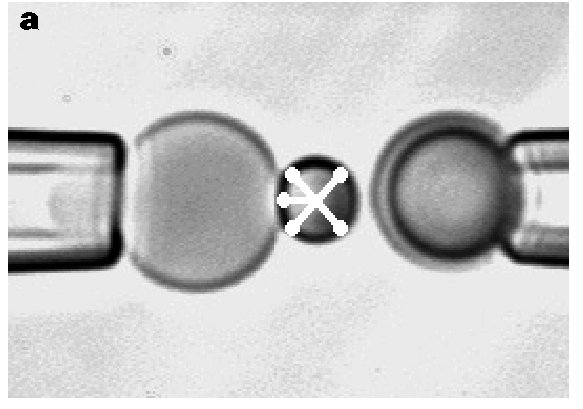Biomembrane Force Probe was pionnered by E. Evans, the principle is
simmilar to Micro-pipette or Atomic Force Microscopy (AFM) excepted
that the soft spring of the sensor is this time a phospholip vesicle
(or the membrane of cell) held by succion in a micro-pipette. The
biomembrane force probe (BFP) is a technique pioneered by
E.Evans\cite{evan95}. It consists in using the deformation of a 10-20
$\mu$m vesicle under tension as a force sensor. The tension in the
vesicle is controlled by a suction pipette that sets the hydrostatic
pressure difference across its membrane. The advantage of this
technique is that the stiffness of the force sensor (i.e. the tension)
can be set at will, allowing for the measurement of a very large range
of forces (from $10^{-15}$ to $10^{-9}$ N). This method has been used
to monitor the force required to break bonds between pairs of
receptor/ligand, antigen/antibody, etc.
| |
Bibliography |
| 1 | Energy landscapes of receptor-ligand bonds explored with dynamic force spectroscopy
R. Merkel, P. Nassoy, A. Leung, K. Ritchie, E. Evans,
Nature
(1999) 397-6714 p.50 PubMed CrosRef
|
.


